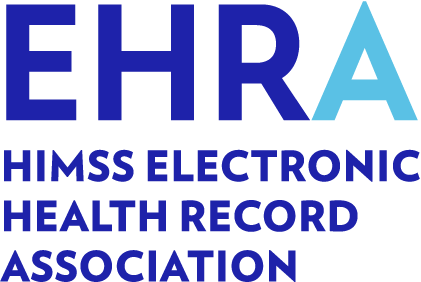Aug 13
2024
Recommendations for Capturing Social Determinants
 By Janet Campbell, Chair, EHR Association Social Determinants of Health & Health Equity Task Force
By Janet Campbell, Chair, EHR Association Social Determinants of Health & Health Equity Task Force
A patient’s risk within social determinant of health (SDOH) domains is typically assessed by social care and healthcare professionals through either conversation, standard screening questionnaires, or validated testing instruments. The challenge is the lack of consensus on which specific domains should be assessed for patients – and how they should be assessed.
Consider the following:
- Healthy People 2030 lists five broad domains of risk.
- The Future of Nursing 2020-2030 lists 11 domains of risk.
- The Gravity Project lists 20 Social Risk Terminology Value Sets.
- CMS’s Quality ID #487: Screening for Social Drivers of Health, requires screening of five domains.
This lack of uniformity reflects the absence of a consistent, universally agreed-upon, and prioritized list of domains for assessment, the result of which is overlapping domains that complicate the exchange and interpretation of this data.
Inconsistency Inhibits Interoperability
The absence of clear guidelines for risk assessment and standardized representation of risks in EHRs also hinders effective data exchange to inform interactions at the point of care. The receiving EHR may not be able to interpret data in a way that is helpful to the user, nor can data be aggregated across multiple systems to gain insights into social risks at a broader geographical or environmental scale.
This complexity and confusion are exacerbated by regulatory agencies that aren’t operating in sync and the growing proliferation of terminology.
To effectively respond to evolving policymaking, the industry must align on a standardized approach for representing risk and agree on which risks are prioritized for collection and analysis. At the same time, we should allow for individual or site-by-site variability as to how those risks are assessed, to reflect the broad range of approaches based on local resources, knowledge, staff, and familiarity.
Identifying an Effective Solution
To address this growing problem and enable EHR developers, providers, and other stakeholders to respond effectively to evolving policymaking, the EHR Association has released Recommendations for Determinant Capture. It identifies several recommendations for a reasonable path forward for EHR developers and the healthcare industry, the effectiveness of which was assessed against four criteria: feasibility across EHR systems; adaptability to diverse healthcare settings; interoperability for social risk data; and support for research and data utilization.
That assessment resulted in four recommendations:
- EHRs should standardize how they represent domain risk. At a minimum, an EHR should be able to indicate whether a patient was assessed for a domain risk, whether that risk is present, and the method of assessment if a standardized instrument or questionnaire was used.
- The standards industry should determine how domain risk is represented in data exchange. A structured representation simplifies the process for EHRs transmitting data to other systems by focusing on the essential elements of a risk assessment. EHRs receiving this data can easily determine and represent whether social risk exists across assessed domains.
- The healthcare community should list and prioritize which domains should be assessed. In line with the 2023 IPPS rule, which recommends the assessment of food insecurity, housing instability, transportation needs, utility difficulties, and interpersonal safety, we urge that EHRs be equipped to support the documentation of the corresponding Gravity Project domains: food insecurity, housing instability, transportation insecurity, inadequate housing, and intimate partner violence.
- Risk assessment methods should remain flexible for now. Although standardized instruments for assessing risk can offer more reliability, mandating their exclusive use in EHRs is not advisable. Such a requirement could inadvertently limit the flexibility required by users’ diverse needs and capabilities. Therefore, it is critical to avoid regulation that prescribes use of specific screeners and assessments at this time.
These recommendations are designed to accommodate a gradual transition toward more widespread adoption of standardized screeners, in sync with the industry’s evolution and readiness to adopt these tools.
Assessing the Recommendations
When evaluated against the criteria above, these current recommendations provide a reasonable path forward for EHR developers and the healthcare industry at large:
- Feasibility across EHR systems: The proposed flexibility in risk assessment methods imposes the lowest technical implementation burden for all EHR developers, short of not offering any recommendations at all.
- Adaptability to diverse healthcare settings: EHR developers are free to design solutions that can scale to meet their target users, regardless of their sophistication and familiarity with assessing social risk.
- Interoperability for social risk data: The recommendations, coupled with the development of accompanying standards, support the exchange of usable information on broad areas of social risk. Care settings that require a more rigorous assessment of risk can understand how risk was assessed at the originating organization and accept or reevaluate it accordingly.
- Support for research and data utilization: While not as reliable as more granular risk assessment data, our recommendation supports aggregation at the population level to better identify and understand at-risk populations.
Taking Action
As inpatient organizations prepare to start reporting on patient screenings for the aforementioned social determinants in 2024, we advise CMS to consider postponing the advancement of this requirement. This delay would allow sufficient time to gather insights and learn from industry practices.
As the industry matures, we encourage careful consideration of new domains or more prescriptive guidance around screeners. Any such expansion must be backed by a comprehensive understanding of how to implement these changes effectively, without increasing clinician burden.
Janet Campbell is Chair of the EHR Association’s Social Determinants of Health & Health Equity Task Force.